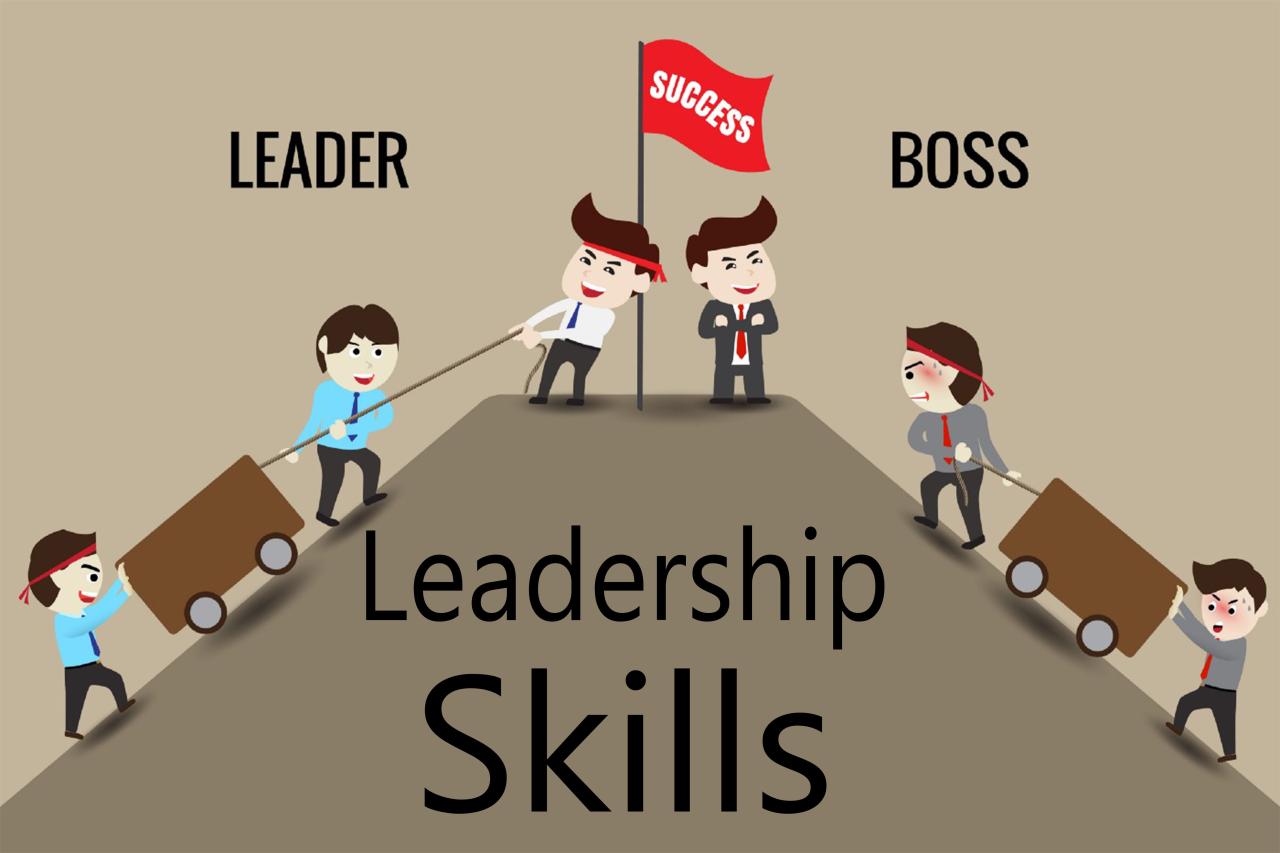Effective leadership involves more than holding a title or having a team follow instructions. It encompasses the capacity to foster a positive company culture, adapt to unpredictable market conditions, and consistently deliver value to customers and stakeholders. By embodying key leadership skills, you can help your employees reach their full potential, navigate challenges with confidence, and stay committed to achieving organizational goals. In essence, becoming a well-rounded leader ensures your business remains resilient, competitive, and poised for long-term viability.
This comprehensive guide explores the vital leadership skills every business owner needs. We will examine why these qualities matter, how to cultivate them, and ways to integrate them into everyday practices. As you gain deeper insights into leadership competencies, you will be better positioned to shape a thriving organization that stands the test of time.
At its core, leadership is about influence. It is the art and science of motivating people toward a common objective, setting the pace, and driving the collective effort toward meaningful outcomes. Without strong leadership, even the most promising business concepts can falter. This is because leadership provides direction, instills purpose, and aligns teams around shared values.
A. Aligning Mission and Vision
A leader who clearly communicates the company’s mission and vision ensures that every team member understands the broader purpose behind their work. This alignment creates unity, fosters loyalty, and motivates employees to go above and beyond the call of duty.
B. Facilitating Change Management
In a rapidly evolving marketplace, the ability to guide teams through transitions is paramount. Whether it’s implementing new technology, restructuring departments, or entering new markets, leaders must be adept at managing change. By doing so, they minimize resistance, maintain morale, and keep the organization focused on growth.
C. Building a Positive Culture
The work environment you cultivate as a leader sets the tone for employee engagement and satisfaction. A positive culture—characterized by respect, inclusivity, and open communication—increases productivity, reduces turnover, and encourages continuous improvement.
D. Enhancing Customer Experience
Leaders who care about their workforce also show genuine concern for customers. When employees feel supported and valued, they are more likely to deliver high-quality service. A leader’s influence thus extends beyond internal dynamics and can shape the overall customer experience.
Key Leadership Skills Every Business Owner Needs
Developing effective leadership involves honing a variety of skills. While some individuals may naturally possess certain traits, all of these skills can be learned, practiced, and improved over time. The following sections delve into essential leadership competencies that will help you inspire trust, drive performance, and achieve lasting business results.
1. Effective Communication
At the heart of great leadership lies the ability to communicate clearly, honestly, and persuasively. When team members understand their responsibilities, appreciate the reasoning behind decisions, and know that their input is heard, they become more engaged and productive.
A. Clarity and Conciseness
Avoid jargon and overly complex language. Instead, opt for clarity and simplicity. When directions are straightforward, employees can take swift, confident action without second-guessing the intended message.
B. Active Listening
Communication is a two-way street. Encourage open dialogue by listening attentively, asking follow-up questions, and acknowledging concerns. Active listening shows employees that their opinions matter and can lead to valuable insights you might have overlooked.
C. Consistency in Messaging
Ensure that your messaging is consistent across various channels—email updates, team meetings, or company-wide announcements. Consistent communication builds trust and prevents confusion.
D. Tailoring Messages to the Audience
A leader must recognize that different audiences—employees, investors, customers—require different communication styles. Adapt the tone, complexity, and detail level according to the listener’s needs and interests.
2. Emotional Intelligence
Emotional intelligence (EQ) is the capacity to recognize, understand, and manage both your own emotions and those of others. Leaders with high EQ can navigate conflicts, inspire loyalty, and maintain a supportive working environment.
A. Self-Awareness
Understand your strengths, weaknesses, triggers, and biases. Being self-aware helps you regulate your reactions, stay composed under pressure, and make well-informed decisions.
B. Empathy
Put yourself in others’ shoes to truly understand their challenges, motivations, and feelings. Empathy encourages compassionate responses and can deepen the bonds within your team.
C. Conflict Resolution
Strong EQ allows leaders to handle disagreements productively. Instead of letting conflicts simmer, address them openly, listen to all parties, and guide the discussion toward a fair resolution.
D. Encouraging Open Feedback
An emotionally intelligent leader invites constructive criticism and feedback. This openness demonstrates humility, builds trust, and ensures that team members feel valued for their honest input.
3. Strategic Thinking and Vision
A business owner must see beyond daily tasks and short-term goals. Strategic thinking involves anticipating future trends, identifying potential risks, and positioning the company to capitalize on upcoming opportunities.
A. Setting Clear Objectives
Define specific, measurable, achievable, relevant, and time-bound (SMART) goals. Clear objectives help teams understand priorities and allocate resources efficiently.
B. Adapting to Market Changes
The ability to adjust strategies in response to shifting market conditions is a hallmark of strong leadership. By staying informed about industry trends, customer preferences, and competitor activities, you can pivot quickly when needed.
C. Long-Term Planning
While addressing immediate issues is important, don’t lose sight of the bigger picture. Develop long-range plans that guide the company’s growth and resilience over multiple years, ensuring stability and continuous evolution.
D. Involving Others in Strategy
Seek input from various stakeholders—employees, advisors, and customers—when formulating strategies. This inclusive approach fosters a sense of collective ownership and often leads to more robust, well-rounded decisions.
4. Decision-Making
The quality and speed of your decisions significantly influence business outcomes. Strong decision-making involves gathering relevant data, considering multiple perspectives, and maintaining confidence even in the face of uncertainty.
A. Informed Judgments
Use data, research, and expert advice to guide your decisions. Avoid relying solely on intuition, and be prepared to revise your approach when new information emerges.
B. Calculated Risk-Taking
Every business faces risk. Rather than avoiding it completely, effective leaders manage risk by assessing potential gains and losses, preparing contingency plans, and learning from outcomes.
C. Timeliness
Indecision can lead to missed opportunities and hinder team progress. Commit to making timely choices, even if that means working with incomplete data, and be ready to adapt if circumstances change.
D. Transparency
When possible, explain the rationale behind decisions to your team. Transparency enhances trust and fosters a culture where employees feel respected and informed.
5. Adaptability and Resilience
In an era of rapid technological advancements, shifting consumer behaviors, and global uncertainties, business owners must remain adaptable and resilient. These qualities enable leaders to navigate disruptions and emerge stronger.
A. Embracing Change
Change can be intimidating, but resisting it often leads to stagnation. Instead, view change as an opportunity for growth, innovation, and learning.
B. Maintaining Composure
Unexpected setbacks occur even with the best planning. Composure under pressure reassures your team that challenges can be overcome with steady effort and creative problem-solving.
C. Continuous Learning
A commitment to lifelong learning keeps leaders agile. By staying informed about industry updates, emerging tools, and leadership best practices, you remain prepared to tackle new obstacles.
D. Celebrating Small Wins
Acknowledging progress, even minor improvements, boosts morale and reinforces a spirit of resilience. Recognize achievements regularly to maintain momentum during challenging periods.
6. Delegation and Empowerment
A leader who tries to handle every task alone quickly becomes overextended. Effective delegation not only eases the leader’s workload but also empowers employees to take ownership, develop skills, and grow professionally.
A. Matching Tasks to Strengths
Identify the unique skills and interests of your team members. Assign responsibilities that align with their strengths, ensuring higher quality work and improved efficiency.
B. Providing Clear Guidelines
When delegating, offer clear instructions and desired outcomes. Give employees the autonomy to choose their methods, allowing them to exercise creativity and problem-solving abilities.
C. Building Trust
Entrusting employees with significant responsibilities demonstrates your confidence in their capabilities. This trust encourages them to rise to challenges and take pride in their contributions.
D. Offering Support and Feedback
Delegation doesn’t end after handing off a task. Stay available for guidance, periodically check progress, and provide constructive feedback. This ongoing support helps team members learn from their experiences and refine their approaches.
7. Time Management and Prioritization
Leaders must juggle multiple responsibilities: strategic planning, team management, and engaging with stakeholders. Effective time management ensures that critical tasks receive the attention they deserve, while less important activities do not divert valuable resources.
A. Setting Priorities
Distinguish between urgent tasks and those that are important but not time-sensitive. Focus first on tasks with significant impact, ensuring essential goals move forward.
B. Planning and Scheduling
Utilize calendars, project management tools, or time-blocking techniques. Structuring your time provides clarity, reduces stress, and prevents last-minute scrambling.
C. Avoiding Multitasking Pitfalls
Contrary to popular belief, multitasking often reduces efficiency. Prioritize one task at a time to maintain quality and speed in your work.
D. Learning to Say No
Leaders must guard their time carefully. Politely declining low-value opportunities allows you to invest energy in initiatives that genuinely drive progress.
8. Building and Maintaining Relationships
Healthy relationships—both inside and outside the company—form a vital support network for sustainable success. A leader who nurtures strong bonds will find it easier to collaborate, negotiate, and inspire loyalty.
A. Networking
Establish connections within your industry, attend conferences, and engage in online forums. Networking expands your resource pool, opens doors to partnerships, and keeps you updated on best practices.
B. Mentorship and Coaching
Offer guidance to less experienced colleagues and seek mentorship from those who have walked the path before you. Mentoring fosters an environment of mutual growth and knowledge sharing.
C. Stakeholder Engagement
Regularly communicate with customers, suppliers, investors, and community members. Understanding their perspectives ensures that your decisions align with their expectations and fosters long-term support.
D. Conflict Management
Even healthy relationships encounter disagreements. Approach conflicts diplomatically, seeking fair resolutions that preserve respect and trust among all parties involved.

9. Cultural Competence and Inclusivity
Modern businesses often serve diverse markets and employ people from various backgrounds. A leader skilled in cultural competence and inclusivity can leverage diversity to drive innovation, creativity, and broad market appeal.
A. Valuing Differences
Recognize that diversity of thought, ethnicity, gender, and background enhances problem-solving. Encourage individuals to share unique viewpoints, enriching the decision-making process.
B. Inclusive Policies
Develop policies that support work-life balance, flexible working arrangements, and opportunities for professional development. Inclusive policies ensure that employees from all backgrounds feel valued and included.
C. Training and Education
Offer cultural awareness training and workshops to help team members understand each other’s perspectives. An informed workforce reduces misunderstandings and cultivates empathy.
D. Leading by Example
Demonstrate inclusivity through your actions, language, and decisions. When leaders champion diversity, the rest of the organization follows suit, resulting in a harmonious and dynamic workplace.
10. Accountability and Integrity
Integrity forms the foundation of trust between a leader, their team, and external stakeholders. By holding yourself accountable and adhering to ethical standards, you set a precedent that others will respect and emulate.
A. Leading with Honesty
Be honest about both successes and failures. Authenticity builds credibility, while transparent communication ensures that employees and stakeholders trust your intentions.
B. Taking Responsibility
When mistakes occur, owning them rather than deflecting blame fosters an environment of learning and growth. Employees appreciate leaders who hold themselves accountable to the same standards they set for their teams.
C. Upholding Ethical Standards
Adhering to ethical practices—fair compensation, responsible sourcing, truthful marketing—demonstrates commitment to doing the right thing. This commitment not only safeguards your reputation but also encourages others to act ethically.
D. Encouraging Others to Follow Suit
By modeling accountability and integrity, you inspire your team members to conduct themselves ethically as well. Over time, this collective sense of responsibility becomes ingrained in the company’s culture.
Integrating Leadership Skills into Your Daily Routine
Knowing which leadership skills matter is only the first step. The real test lies in incorporating these skills into your day-to-day operations, ensuring that they become second nature and guide every decision you make.
A. Self-Reflection
Regularly evaluate your performance. What went well this week? Which areas can you improve? Honest self-assessment helps you stay on the path of continuous improvement.
B. Professional Development
Invest in ongoing learning opportunities such as leadership courses, workshops, webinars, or coaching sessions. Consistent professional development keeps your skills sharp and relevant.
C. Open-Door Policy
Encourage employees to approach you with ideas, concerns, or suggestions. Maintaining an open-door policy removes communication barriers and ensures that valuable insights are not missed.
D. Celebrating Milestones
Recognize and celebrate achievements—both individual and team-based. Acknowledging hard work and progress reinforces a positive organizational culture and motivates everyone to maintain high performance.
Overcoming Common Leadership Challenges
Every leader faces obstacles. The difference between effective and ineffective leadership often lies in how those challenges are handled. By anticipating potential hurdles, you can navigate them more smoothly.
A. Dealing with Resistance to Change
When implementing new initiatives, some team members may resist. Address their concerns, provide clear reasoning for the changes, and highlight potential benefits to ease anxiety and gain buy-in.
B. Balancing Compassion and Tough Decisions
Leaders sometimes must make difficult choices—layoffs, budget cuts, strategic pivots—while still showing empathy. Communicate these decisions honestly and sensitively, ensuring that people understand the rationale behind them.
C. Maintaining Boundaries
While approachability is a virtue, maintain professional boundaries. Ensure that personal relationships do not compromise your ability to lead objectively and make fair decisions.
D. Handling Burnout
Overwork can lead to burnout, reducing your capacity to lead effectively. Recognize signs of stress, prioritize work-life balance, and delegate tasks to avoid spreading yourself too thin.
Measuring Leadership Success
How can you tell if your leadership efforts are paying off? Establishing clear metrics and feedback loops allows you to gauge your impact and make informed adjustments.
A. Employee Engagement and Retention
High engagement and low turnover rates suggest that your leadership style resonates with your team. Conduct regular employee satisfaction surveys to identify areas of strength and those needing improvement.
B. Goal Achievement
Track progress against strategic objectives, revenue targets, and market share improvements. Consistent achievement of these goals indicates that your leadership approach is guiding the company in the right direction.
C. Customer Satisfaction
Positive customer feedback, repeat business, and strong brand loyalty signal that your leadership fosters a customer-centric culture. Encourage employees to deliver exceptional service and measure the results.
D. Innovation and Growth
Monitor the rate of product launches, process improvements, and market expansions. Successful innovation and consistent growth are often byproducts of strong leadership that encourages creativity and risk-taking.
The Evolving Nature of Leadership
Leadership is not static. As your business grows and markets evolve, you must adjust your leadership style. The best leaders remain flexible, always willing to adopt new tools, strategies, and mindsets.
A. Staying Current with Trends
Keep pace with leadership best practices by reading books, attending seminars, or following thought leaders online. Staying current ensures you continuously refine your skill set.
B. Embracing Technology
Advanced communication tools, project management software, and data analytics platforms can enhance your leadership capabilities. Technology can streamline decision-making, improve collaboration, and provide real-time performance insights.
C. Encouraging a Growth Mindset
Embrace the idea that you and your team can improve through learning and perseverance. A growth mindset fosters resilience, openness to feedback, and a willingness to tackle challenges head-on.
D. Leaving a Legacy
As your leadership journey continues, consider the legacy you want to leave. Creating a sustainable culture, nurturing future leaders, and positively impacting your community ensures your influence endures beyond your tenure.
Conclusion
Leadership skills form the backbone of every successful business. They guide how you communicate, make decisions, manage change, and inspire others. By developing emotional intelligence, strategic thinking, resilience, and a strong sense of integrity, you create an environment where employees thrive, customers remain loyal, and the organization achieves its objectives.
Continuous improvement is key. As you hone your leadership abilities, remember that it is a journey rather than a destination. Stay committed to learning, adapting, and growing. Over time, the leadership skills you cultivate will not only strengthen your business today but also position it for a prosperous and sustainable future.










